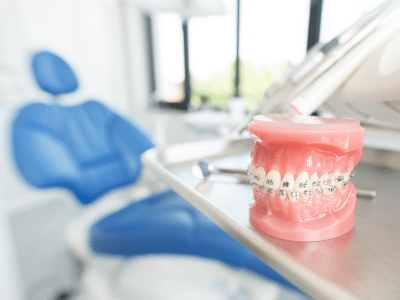Intriguing Facts About Orthodontics

1. The Word “Orthodontics” Has Ancient Roots
The term “orthodontics” originates from two Greek words: “ortho” meaning straight and “dont” meaning tooth. The term was coined in 1841 by French doctor Pierre-Joachim Lefoulon as “orthodontosie,” which roughly translates to orthodontia, and built the foundation for the English word orthodontics.
2. Straightening Teeth Is an Ancient Practice
Straight teeth have been a priority for humans for thousands of years. Archaeologists discovered Egyptian mummies with metal bands on their teeth dating back to 3700 B.C. In ancient Rome, physician Celsus used devices to realign teeth. These early methods paved the way for the advanced orthodontics we use today.
3. Orthodontics Was the First Dental Specialty
Edward H. Angle significantly shaped orthodontics in the United States, becoming the first dentist to specialize in the field in 1889. In 1887, he addressed the Ninth International Medical Congress, introducing ideas that formed the basis for his renowned book, Treatment of Malocclusion of Teeth, which was reprinted seven times by 1907.
Angle didn’t stop there—he founded the American Association of Orthodontists (AAO) in 1901, establishing strict criteria for dentists to qualify as orthodontists. He also pioneered a classification system for malocclusions, or bite misalignments, which remains a cornerstone of orthodontic practice, helping professionals tailor treatments for specific bite issues.
4. Gold Was the First Material for Braces
Orthodontic devices have been around since ancient times, with the Egyptians, Phoenicians, and Etruscans using gold wire and bands to straighten teeth.
By around 1900, gold became the go-to material for orthodontic appliances. Its malleability made it easy to shape into braces, and it had the ability to stretch, which helped with tooth movement. However, these early braces required frequent visits to the orthodontist for adjustments to ensure the treatment was effective.
Today, orthodontists use tools like braces or aligners to gently and consistently apply pressure to teeth, moving them into their correct positions. While braces could straighten teeth, they sometimes shifted back to their original positions. In 1920, the problem was solved with the invention of removable retainers, which are worn after braces to help maintain the new alignment.
5. Pressure Moves Teeth Over Time
Orthodontic appliances like braces and aligners work by applying consistent, gentle pressure to teeth. Over time, this pressure helps guide teeth into their proper positions. However, bad habits like thumb-sucking can create damaging pressure, leading to misalignment.
6. Orthodontics Is Personalized Care
Every smile is unique, and so is every orthodontic treatment plan. Orthodontists tailor their approach to each patient’s needs, using tools like braces or clear aligners to achieve the best results. Regular checkups ensure that progress stays on track.
Transform Your Smile
Your smile is one of your most valuable assets, and orthodontics is the first step toward enhancing it. At Sosebee & Britt Orthodontics, we believe that every journey to better oral health and a more confident smile should be as smooth and supportive as possible. Whether you’re looking to correct alignment issues, improve functionality, or simply achieve the smile you’ve always dreamed of, we’re here to guide you every step of the way.
Our team is dedicated to creating personalized treatment plans that cater to your unique needs and goals. Let us help you unlock your best smile yet! Ready to begin your transformation? Contact us today to schedule your consultation, and take the first step toward a healthier, brighter future.